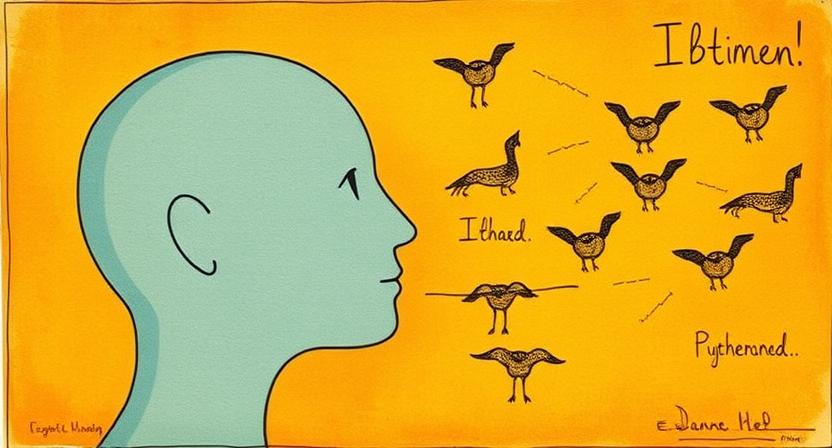Exploring Idioms: What They Reveal About a Language’s Culture

Idioms and Their Meaning
Idioms are expressions that carry a figurative meaning different from the literal interpretation of the words used. These phrases are deeply ingrained in everyday language, often adding color and nuance to communication. Understanding the meaning behind idioms is crucial for effective communication, as misinterpreting them can lead to confusion or misunderstandings.
The origins of idioms can often be traced back to historical events, cultural practices, or societal beliefs. Over time, these expressions have been passed down through generations, evolving to reflect changing language trends and societal values. Exploring the origins of idioms provides insight into the rich tapestry of human communication and the ways in which language adapts and evolves over time.
Origins of Idioms
Idioms are a fascinating aspect of language that often hold historical significance and cultural roots. The origins of idioms can be traced back to various sources, including historical events, folklore, and everyday activities. Many idioms have their roots in ancient myths and stories, passed down through generations and eventually becoming integrated into everyday language.
Some idioms have origins in specific professions or trades, evolving over time to be used in a more general context. For example, the idiom “raining cats and dogs” is believed to have originated from the Middle Ages when animals sought shelter on rooftops during heavy rainstorms. Understanding the origins of idioms can provide insight into the historical context in which they were created and shed light on the cultural influences that have shaped language over time.
Cultural Influences on Idioms
Idioms are often deeply rooted in the cultural fabric of a society, reflecting the values, beliefs, and norms of a particular group of people. These expressions, unique to different cultures, provide insights into the way individuals within a community perceive the world around them. Cultural influences play a significant role in the creation and evolution of idiomatic expressions, shaping the language and communication style of a society.
The richness and diversity of idioms across cultures exemplify the intricate tapestry of human experiences. From ancient proverbs passed down through generations to modern colloquial expressions, idioms are a treasure trove of cultural heritage. By delving into the origins and meanings of these linguistic treasures, we gain a deeper understanding of the traditions, customs, and collective wisdom that define various societies.
Idioms in Everyday Language
Idioms are expressions or phrases that have a figurative meaning different from the literal interpretation of the words used. They are commonly used in everyday language to add color, depth, and nuance to communication. Whether in casual conversations, formal settings, or written texts, idioms play a significant role in conveying messages more effectively and succinctly. For instance, “barking up the wrong tree” means pursuing a mistaken course of action or direction, while “hit the nail on the head” implies getting something exactly right.
Incorporating idioms into everyday language can enhance communication by making conversations more engaging and expressive. People often use idiomatic expressions to convey complex ideas in a concise and memorable manner. While some idioms have been passed down through generations, others may be more contemporary in nature, reflecting the evolving language and cultural trends. Overall, idioms enrich everyday language by infusing it with creativity, humor, and cultural references.
Idioms Across Different Languages
Idioms are a fascinating aspect of language that vary widely across different cultures. While they serve to add color and depth to communication, the literal translation of idioms from one language to another often poses challenges. Each language holds a unique set of idiomatic expressions that reflect the cultural values, beliefs, and historical contexts of its speakers.
Understanding idioms in different languages requires more than just direct translation; it demands an awareness of the underlying cultural nuances. For example, the English idiom “raining cats and dogs” may not make sense to a non-native speaker without knowledge of its historical origins. Similarly, the Chinese idiom “draw a snake and add legs” signifies unnecessary effort, a concept that may not exist in other languages. The diversity of idiomatic expressions across languages highlights the richness and complexity of human communication.
• Idioms are cultural expressions that add depth to language
• Literal translation of idioms can be challenging across languages
• Each language has unique idiomatic expressions reflecting cultural values and beliefs
• Understanding idioms requires awareness of cultural nuances
• English idiom “raining cats and dogs” may not make sense without historical context
• Chinese idiom “draw a snake and add legs” signifies unnecessary effort
Idioms and Cultural Values
Idioms often reflect the cultural values of a society, serving as a window into the beliefs and priorities of a particular group of people. These expressions, deeply ingrained in a community’s language, carry underlying meanings that resonate with the shared experiences and perspectives of its members. By examining the idioms commonly used within a culture, we can gain insights into what is important, respected, or discouraged within that society.
Through the lens of idioms, we can observe how certain values are prioritized or reinforced in different cultures. For example, idioms that emphasize hard work and perseverance may reflect a cultural emphasis on diligence and resilience. On the other hand, idioms that highlight community ties and cooperation may underscore the importance of unity and collaboration within a particular society. By analyzing the idiomatic expressions prevalent in a culture, we can uncover the values and principles that shape the way individuals interact and understand the world around them.
Idioms and Historical Context
In understanding the historical context of idioms, one must delve into the rich tapestry of human experiences that have shaped language over time. Idioms often carry remnants of past cultural practices, beliefs, and societal norms that are no longer prevalent in modern times. Through studying the origins of idioms, researchers can uncover valuable insights into the ways in which people communicated, interacted, and viewed the world in earlier eras.
Examining idioms in their historical context can provide a glimpse into the daily lives and thought processes of historical societies. The evolution of idiomatic expressions can reveal shifts in values, power dynamics, and social structures that have occurred over centuries. By tracing the usage of idioms through various historical periods, linguists and historians can better comprehend the complexities of human communication and how language reflects and shapes the world in which it is spoken.
Idioms and Social Norms
Social norms play a significant role in shaping the language we use, including the idioms that are commonly employed in everyday communication. Idioms often reflect the values, beliefs, and expectations of a particular society, mirroring the accepted behaviors and customs within a culture. By understanding the social norms that underpin the use of idioms, we can gain insights into the collective mindset of a community or society.
The idioms prevalent in a society can provide a window into the unspoken rules and conventions that govern interpersonal relationships and interactions. For instance, idioms related to politeness or respect may highlight the importance placed on etiquette and decorum within a specific social context. Conversely, idioms that challenge or subvert traditional social norms can offer a glimpse into countercultural movements or changing societal attitudes.
Idioms and Regional Differences
Idioms often reflect the unique cultural and linguistic characteristics of a specific region. Different regions around the world have their own set of idiomatic expressions that are deeply rooted in the local customs, traditions, and history. These regional idioms not only serve as colorful additions to everyday language but also offer insights into the values and mindset of the people living in those areas.
Regional idioms can vary significantly even within the same country, showcasing the diversity and richness of language across different geographical areas. These idiomatic differences can sometimes lead to misunderstandings or confusion when communicating with individuals from other regions. However, they also highlight the beauty and complexity of language evolution within specific cultural contexts.
Idioms and National Identity
National identity is often closely intertwined with language and communication. Idioms play a significant role in reflecting the unique cultural characteristics and values of a nation. Through the use of idiomatic expressions, a sense of belonging and shared identity is reinforced among members of a particular country or community.
Idioms can serve as linguistic symbols that connect individuals to their national heritage and history. By employing idioms that are specific to a particular culture, individuals not only express themselves more authentically but also reinforce a collective sense of national pride and unity. In this way, idioms contribute to the preservation and promotion of a nation’s distinct identity in the globalized world.
Evolution of Idioms
The evolution of idioms is a fascinating journey through time, reflecting the changing cultural norms and societal values of different eras. Idioms have been passed down from generation to generation, with each iteration adding a layer of complexity and nuance to their meanings. As societies evolve and language transforms, idioms adapt to reflect the current realities and experiences of people.
The development of idioms can be traced back to ancient civilizations, where oral traditions played a significant role in shaping language. Over time, idioms have evolved to encompass a wide range of subjects and themes, from everyday experiences to abstract concepts. Through this evolution, idioms have become an integral part of communication, offering a unique insight into the history and cultural heritage of a society.
Idioms in Literature
The use of idioms in literature adds depth and richness to the narrative, enhancing the reader’s experience and providing insight into the characters and their cultural backgrounds. Authors often employ idiomatic expressions to convey complex emotions or ideas succinctly, allowing readers to connect more deeply with the text. Moreover, idioms can serve as literary devices that create imagery, evoke emotions, and establish a specific tone within a piece of writing.
Incorporating idioms into literary works also offers a unique way for authors to reflect the linguistic diversity of the society they are depicting. By using idiomatic language, writers can capture the essence of a particular dialect or regional speech pattern, bringing authenticity to the dialogue and enhancing the overall realism of the narrative. Additionally, the use of idioms in literature can serve as a means of preserving cultural heritage and showcasing the nuances of language, contributing to a richer and more vibrant literary landscape.
Idioms in Popular Culture
Popular culture is a fertile ground for the creation and propagation of idioms. From iconic movie quotes to catchphrases from TV shows, idioms often originate from pop culture references that resonate with a wide audience. These idioms quickly embed themselves in everyday language, reflecting the influence of movies, music, social media, and celebrity culture on our vernacular.
Additionally, the fast-paced nature of popular culture ensures that new idioms are constantly being coined and circulated. Memes, viral videos, and trending hashtags on social media platforms can give rise to new idiomatic expressions that capture the zeitgeist of the moment. These idioms reflect current trends, values, and attitudes, making them a dynamic and ever-evolving aspect of language in the modern age.
Idioms in Advertising
Idioms play a significant role in advertising, with companies using these cultural phrases to create memorable and impactful campaigns. By incorporating familiar idioms into their advertisements, businesses aim to connect with consumers on a deeper level, appealing to their emotions and tapping into shared cultural experiences. Idioms help companies establish a sense of familiarity and relatability, making their products or services more appealing to potential customers.
Furthermore, idioms in advertising can serve as attention-grabbing hooks that draw in audiences and leave a lasting impression. Whether it’s a catchy tagline or a clever play on words using a well-known idiom, these linguistic expressions have the power to make a brand stand out in a crowded marketplace. Leveraging idioms effectively in advertising campaigns can help companies establish a strong brand identity and create a lasting impact on consumers’ perception of their products or services.
Idioms in Business Communication
Idioms play a significant role in business communication, often used to convey complex ideas in a succinct and relatable manner. In the fast-paced world of business, where time is of the essence, idioms can help streamline conversations and get straight to the point. For example, saying “let’s touch base” is a common idiom used in meetings to suggest a quick catch-up or update without delving into lengthy explanations.
Moreover, idioms can also foster a sense of camaraderie and build rapport among colleagues and clients. Using idioms in business communication can create a shared understanding and demonstrate cultural fluency, which is crucial in establishing positive relationships in the professional sphere. Employing idioms like “get the ball rolling” or “put all your eggs in one basket” can add a touch of familiarity and warmth to exchanges, making interactions more engaging and memorable.
Idioms in Politics
Politics is a realm where language plays a pivotal role in shaping perceptions and conveying messages. Idioms, as colorful expressions deeply ingrained in a culture, are frequently employed by politicians to evoke specific sentiments or convey complex ideas in a succinct manner. These phrases, often laden with historical and cultural connotations, can help politicians establish connections with their audience and make their messages more relatable.
Idioms in politics can serve various purposes, from emphasizing a particular stance or policy to critiquing opponents or even rallying supporters. By using familiar idiomatic expressions, politicians can tap into shared cultural experiences and values, creating a sense of camaraderie with their audience. However, the effectiveness of idioms in political discourse can also be influenced by factors such as regional variations in language usage or shifts in societal norms.
Idioms in Education
Idioms play a significant role in education, as they are often used to enhance language learning and comprehension. Incorporating idioms into classroom instruction can help students understand the nuances of language and expand their vocabulary. By exposing learners to idiomatic expressions early on, educators can foster a deeper appreciation for the richness of language and encourage creativity in communication.
Moreover, idioms in education can also serve as cultural bridges, allowing students to gain insights into different societies and worldviews. Learning about idiomatic expressions from various languages and cultures can broaden students’ perspectives and promote cross-cultural understanding. In a globalized world where communication across borders is increasingly important, developing awareness of idioms can help students navigate diverse social contexts with greater cultural sensitivity.
Idioms and Humor
Understanding idioms can add a layer of humor to communication that transcends literal meaning. Idioms often rely on clever wordplay and cultural references, making them ripe for comedic interpretation. For example, the idiom “hit the hay” to mean go to bed may seem nonsensical when taken literally but can elicit a chuckle when used in the context of a conversation about sleep.
The playful nature of idioms allows for creativity in language use, leading to humorous expressions that can lighten the mood in everyday interactions. Whether used intentionally for comedic effect or arising naturally in conversation, idioms inject levity into communication by offering unexpected twists on familiar phrases. Embracing the humor in idiomatic expressions can foster a sense of shared understanding and connection among speakers who appreciate the wit and whimsy of language.
Idioms and Translation Challenges
Translating idioms from one language to another can be a daunting task for translators. The challenge lies in capturing the essence and cultural nuances of the idiom while ensuring that the translated version makes sense in the target language. Idioms are often deeply rooted in the language and culture where they originated, making direct translation difficult.
Idioms are expressions that are unique to a particular language and may not have direct equivalents in other languages. Translators must therefore rely on their understanding of both languages and cultures to find the most suitable equivalent idiom or to convey the same meaning using different words. Additionally, idioms can sometimes be tied to historical events or cultural references that may not be easily understood by speakers of other languages, further complicating the translation process.
Impact of Globalization on Idioms
Globalization has significantly influenced the evolution of idioms across different cultures. As societies become more interconnected through the exchange of ideas, languages, and customs, idiomatic expressions have begun to transcend borders and spread rapidly. This phenomenon has led to the adoption of idioms from one language into another, creating a rich tapestry of linguistic diversity in the global community.
Moreover, the global spread of idioms has also sparked a deeper appreciation for cultural nuances and expressions. As individuals from diverse backgrounds interact more frequently, they bring with them a treasure trove of idioms that reflect their unique heritage and experiences. This sharing of idiomatic language not only fosters a sense of cultural understanding but also serves as a bridge for cross-cultural communication, forging connections that transcend linguistic barriers.





